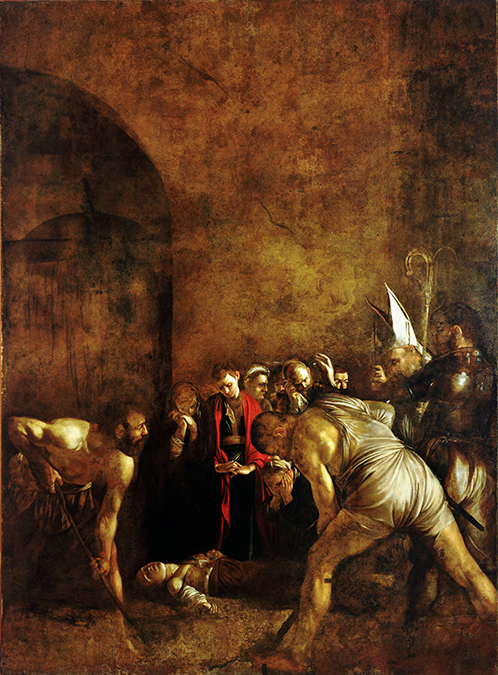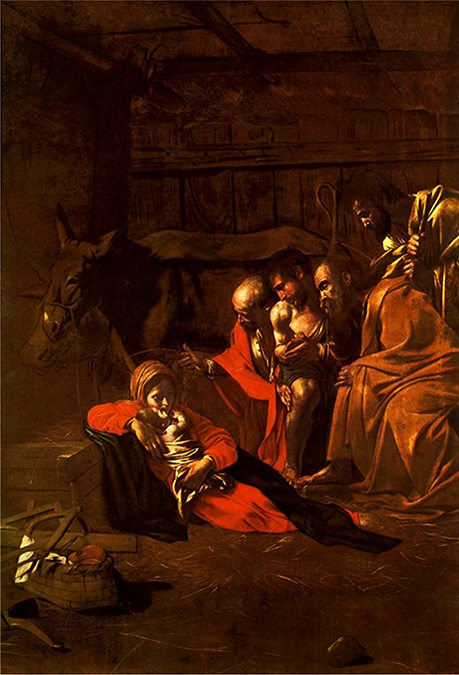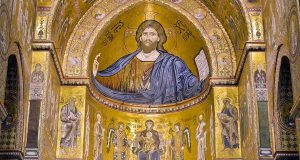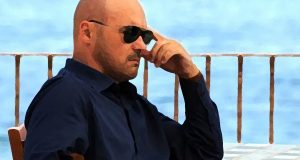Are you passionate about Caravaggio? Would you like to know which of Caravaggio’s paintings are in Sicily? Excellent! This is the article for you. A trip to Sicily will give you the opportunity to appreciate three of his paintings up close: The Burial of Santa Lucia, The Resurrection of Lazarus and The Adoration of the Shepherds. In addition, there is a reproduction of the Nativity with St Francis and St Lawrence, made by Factum Arte for Sky, after the painting was mysteriously stolen in 1969.
Caravaggio’s arrival in Sicily
Why are Caravaggio’s paintings in Sicily? Have you ever wondered? The reason is that Michelangelo Merisi, known as Caravaggio, was as restless as he was talented. While in Rome in 1606, he killed a certain Ranuccio Tommasoni da Terni in one of his frequent quarrels and was sentenced to death by beheading. This forced the painter to leave the capital and flee first to Naples and then to Malta. Here, however, he was arrested after yet another fight and locked up in the Sant’Angelo prison in Valletta. Having made a daring escape, he arrived in Syracuse in October 1608. From an artistic point of view, Caravaggio had a very significant impact on other painters working in Sicily. Some of them tried to imitate his style and, for this reason, are, therefore, referred to as the ‘Caravaggeschi’. Some of the most notable of these are Filippo Paladini, Alonzo Rodriguez and Mario Minniti.
Caravaggio’s painting in Syracuse
The first stop on our journey to discover Caravaggio’s paintings in Sicily takes us to Syracuse. The artist arrived in the city in 1608, through the help of his painter friend, Mario Minniti. The two, according to some sources, had been living together in Rome and Minniti had also been a model for some of Caravaggio’s paintings. The Lombard painter was only in town for a few months, but this was sufficient to leave deep impressions. In addition to the painting of The Burial of Santa Lucia, Caravaggio left another important legacy in the city of Syracuse. It seems, in fact, that it was he who gave the name Orecchio di Dionigi (or Dionisio, or in English: Dionysius’ Ear) to one of Syracuse’s landmarks.
The Burial of Santa Lucia

In the Church of Santa Lucia al Sepolcro, there is a painting of The Burial of Santa Lucia. Caravaggio decided not to portray her martyrdom, as was traditional, but rather the moment of her burial. The scene takes place in a dark underground environment, probably the Catacombs of Santa Lucia. In the foreground are the two gravediggers, who are hurriedly digging the grave in which to lay Lucia’s lifeless body. The girl is lying on the ground, with the wound from the knife (jugulatio) clearly visible on her neck. The proceedings take place in front of a small circle of people, amongst whom are the bishop of Syracuse and a soldier. The characters are concentrated in the lower part of the painting and a stone wall with an arch can be seen behind them. This occupies more than half the canvas, increasing the sense of drama in Caravaggio’s masterpiece.
Caravaggio’s paintings in Messina
The second stop on our journey to discover Caravaggio’s paintings in Sicily takes us to Messina, where Caravaggio moved after spending a few months in Syracuse. A visit to the Regional Museum of Messina (Mu.Me) will give you the chance to admire two masterpieces by the Lombard master.
The Resurrection of Lazarus

The first painting by Caravaggio that you can see in Messina is The Resurrection of Lazarus. The Genoese merchant, Giovanni Battista Lazzari, commissioned the Lombard painter to paint this picture as soon as he arrived in the city on the Strait. The scene depicts the exact moment when Christ resurrects Lazarus with the ‘breath’ of his will. The painting is reminiscent of another of his paintings, The Calling of St Matthew, which had been painted in Rome a few years earlier. In comparison, however, the light in this painting is not direct but more subdued, thus creating a more dramatic effect. The painting is considered to be one of the most representative of Caravaggio’s last artistic phase, the years dedicated to greater experimentation with light, tending almost to ‘erase’ the characters.
The Adoration of the Shepherds

Directly opposite The Resurrection of Lazarus is Caravaggio’s other masterpiece in Messina: The Adoration of the Shepherds. The commission for this painting came directly from the Senate of Messina for the Church of Santa Maria la Concezione dei Padri Cappuccini. The painting was directly influenced by the beliefs of this religious order. In fact, Caravaggio depicts a ‘Poor Nativity’, a genre that was to be very successful in 17th and 18th century painting. The scene is set in a stable with Mary, exhausted from her journey and childbirth, lying on the ground holding the sleeping baby boy in her lap. There are no decorations or superfluous details. The only present is the basket we see in the foreground on the left, containing a loaf of bread, a napkin and a planer. Caravaggio’s style of painting during his time in Messina became distinctive, the brushstrokes were rapid and broad, and the artist’s restlessness was reflected in the eye and facial expressions of the characters.
Caravaggio’s painting in Palermo
The last stop on this itinerary exploring Caravaggio’s artwork in Sicily takes us to Palermo. The painter was promptly commissioned by the Franciscan Order to paint a Nativity with St Lawrence and St Francis of Assisi, to be placed in the Oratorio di San Lorenzo in the Kalsa district. Unlike the other paintings, however, the one you can see in Palermo is only a reproduction made by Factum Arte and commissioned by Sky. The original painting was, in fact, stolen on 18 October 1969 and, despite various investigations to date, it is still missing. The FBI listed the painting as one of the ten most sought-after stolen masterpieces in the world.
Nativity with St Lawrence and St Francis of Assisi

In the Nativity with St Lawrence and St Francis of Assisi, what strikes us is, once again, the incredible realism and authenticity of the painted scene. In the Palermo Caravaggio, every character is captured in a natural pose. The Madonna has the features of an ordinary woman and looks particularly wistful, as if she were already fully aware of the fate awaiting her son. The child is depicted as an ordinary child and not in an attitude of prayer or judgement, as was common in older images. St Joseph is shown with his back turned and is unusually young compared to the traditional iconography. He is depicted in the act of speaking with a character who could be Friar Leone. The figure on the left is St Lawrence, while on the right is St Francis, whose presence in the work is surely a tribute to the Oratorio in which the work was to be placed. In 1609, exactly one year after his arrival in Sicily, Caravaggio continued his travels, returning to Naples. You, on the other hand, can continue to explore all the other delights Palermo has to offer.






